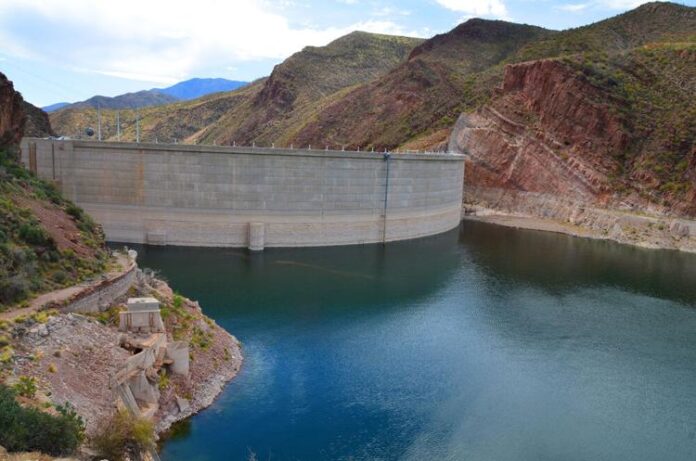
The Joint Legislative Ad Hoc Committee on Water Security met for the first time to outline its goals for addressing both water conservation and the rapidly expanding Arizona population.
The study committee is co-chaired by Senator Sine Kerr, R-Buckeye, and Representative Gail Griffin, R-Sierra Vista. Both the Salt River Project and the Water Infrastructure Finance Authority spoke on the state’s growing water needs.
During its May 16 meeting, the committee discussed expanded usage of the Bartlett Dam and the Roosevelt floodplain and the use of more reclaimed groundwater. If the plan is followed, Bartlett Dam would be constructed to be an additional 100 feet high, allowing for the capture of an additional 300,000 acre-feet of storage. One acre-foot is approximately the size of an eight-lane swimming pool.
“The Valley has a diverse supply of water that is unlike any other community in the Southwest. This includes surface water from lakes and rivers that SRP manages,” said Charlie Ester, director of water supply for SRP. “This year, SRP received more snow across its watershed than we’ve received since 1973 and the most runoff since 2005. It was enough water to fill our reservoirs to capacity while releasing an extra 700,000 acre-feet into the Salt and Gila rivers.”
The SRP delivers 800,000 square feet of water to the Phoenix Metropolitan region each year. Ester gave his presentation on the 13,000-square-foot watershed, which replenishes SRP’s seven reservoirs.
“SRP has managed its system over time to purposefully store water in wet years in order to provide a reliable water supply to our customers during the dry years,” Ester said. “We are undertaking significant projects such as the Bartlett Dam expansion to not only restore critical storage capacity for SRP, but also to create new renewable supplies for non-SRP communities to meet their water challenges.”
Chelsea McGuire, the assistant director of WIFA, gave a presentation relating to the recent allocation of $1 billion toward Arizona’s future water security. According to McGuire, up to $200 million can be allocated to cities, towns, counties and water districts through the Water Conservation Grant Fund. An additional $190 million is available to rural communities to promote the preservation of groundwater and rainwater through the Water Supply Development Fund.
“Arizona is serious about water security, and it needs a holistic approach to secure its water future,” McGuire said. “The historic WIFA legislation was that holistic approach. The first application period for the Water Conservation Grant Fund opportunity closes on Friday. We anticipate a significant number of applications. Arizona communities should submit their applications as soon as possible.”
The committee’s next steps include discussion with experts on groundwater modeling, management practices, and finding additional water sources for the state.
“Upon the Governor’s signature of a bill I’m working on this session, even more entities will be able to take advantage of the WIFA conservation dollars,” Kerr said. “We need an all-of-the-above solution for this crucial issue that impacts all Arizonans. These investments in conservation programs and new water supply development projects will be pivotal as we continue to meet as a committee to address our state’s most pressing water challenges.”
Republished with the permission of The Center Square.













